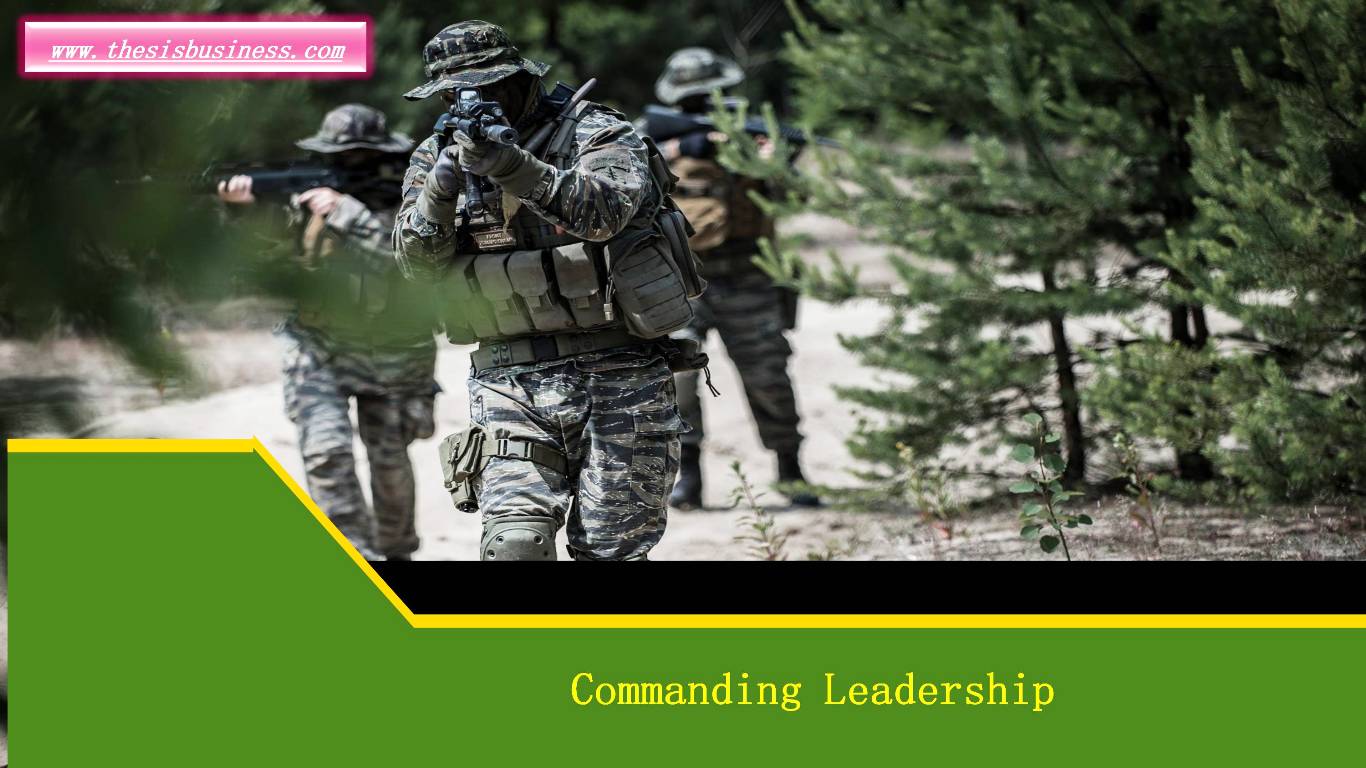Leadership is a critical attribute that many may not are blessed with. If you feel like you are a natural leader and guiding the crowd comes almost instinctively to you, then you must explore the different types of leadership to find the right path for you.
In this article, we shall elaborate on the commanding leadership style and help you identify if you belong to this class of leadership.
Table of Contents
What Is Commanding Leadership?
In simple terms, a commanding leader leads in the most uptight, strict, and rigid manner. They often come off as conservative in their leadership style, creating a very authoritarian environment for everyone around them.
Although a commanding leader knows what they want, and they are not afraid to voice their opinion and charge the crowd as a true leader should.
Steps Involved In The Commanding Leadership Style
Following is how commanding leaders function. Each step involved in the process serves an essential purpose without which a commanding leader cannot carry out his tasks in the right way:
1) Setting Boundaries
A commanding leader will first establish the area of his interest, which will also be the interest of the team he leads. This area is exclusively under the control of a leader in charge of setting goals and the rules of conduct.
2) Clear Communication
The most important agenda of a commanding leader is a clear communication in the group. The commanding leaders ensure that the crowd working under them clearly understands the aims and ambitions. For this, there has to be a two-way conversation that allows people to familiarise themselves with their surroundings.
3) Achieving Goals
Since the style of a commanding leader is rigidly goal-focused, it is the first and last agenda on his list. Commanding leaders are not afraid of voicing their opinion and making things work according to their way to obtain the best result.
Vital Features Of Commanding Leadership Style
The commanding leadership style is one of the oldest, tried and tested methods by world leaders. This style can be very effective if one has the right idea.
However, if the commanding leadership style is not understood as a propeller, then that might lead to a fascist, arbitrary and undemocratic environment. Following are a few vital points in brief to understand this concept better and easier.
From the very name, one will understand that in a commanding leadership style, the leader makes all the decisions irrespective of public opinion.
Reinforcements:
A commanding leader of ten uses rewards and punishments that help in increasing the productivity of the workers. Depending on the results achieved by a particular individual, they may receive positive or negative reinforcement from their commanding leader.
Goal-oriented work style:
The most important thing for the commanding leader is to achieve the goal. For this, they can go to any extent within limits and remove the obstacles from the path so their followers can have a shorter route to success.
Lack of crowd involvement:
A leader clearly understands what they want. The objectives are set, and they don’t need much input from the other working individuals under them.
Best in what they do:
Since commanding leaders take the lead from the beginning to the end, it becomes vital that they are best at what they do. They are confident and have absolute concrete belief in their capabilities.
Advantages Of Commanding Leadership
Clarity In Workspace:
There is clear communication where the leader directly communicates his order to achieve the goal faster. This leads to a confusion-free environment where the team members know their duties and responsibility. The teamwork becomes concrete when the public is spared the hazards ““of working expectations.
Structured Teams:
Even a weak, low-productive group, under the proper guidance of a commanding leader, finds a concrete foundation on which they can work. The leader’s rigid expectations and strict working environment inevitably yield positive results.
Fast Culture:
Decisions are taken quite fast but seriously by a commanding leader. This sets the overall pace for the group as well. Workers know how to work well when the objective is clear. A good decision-maker is committed and aware of the surroundings. Such a leader can genuinely lead the crowd forward.
High Performance:
The crowd under a commanding leader is bound to provide better results than most because that is their only option. They are expected to give their best, and the leader ensures that the individuals working under him have a clear path to early success.
Disadvantages Of Commanding Leadership
Lack Of Group Participation:
Since in the commanding leadership style, the leader makes most of the decisions, there is minimal scope for the working individuals to express themselves. It is a one-way approach where the crowd works according to the prescribed rules without space for personal creative expression.
Works Well For Experienced Leaders:
A crowd will only blindly follow a well-established leader who has proved their capabilities as a ruling person. As a result, a person new to leadership might find this style difficult to implement due to the lack of experience they have offered.
Stifling Working Conditions:
The high expectations of the commanding leaders can cause burnout in the individuals working continuously under them. Often they might need help to keep up with the expectations, and as a result, their productivity might also drop, leading to a collapse in the group.
Conclusion –
Commanding leadership has its advantages and disadvantages, and it ultimately depends on the individual and how they use the style to govern the crowd.
An experienced, well-informed individual can make better use of this style. We have provided all the details that are enough for you to understand this concept and then decide for yourself if this is the way for your leadership.
